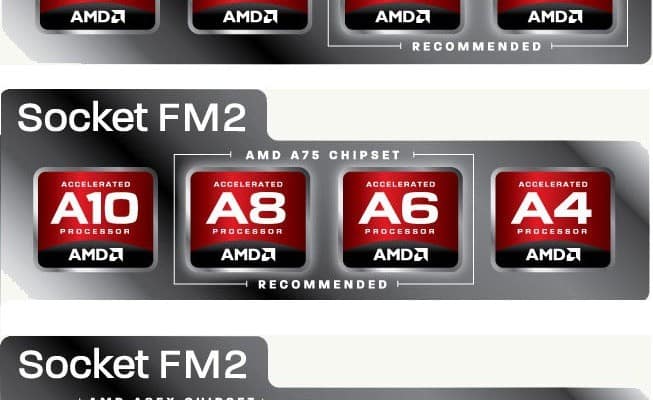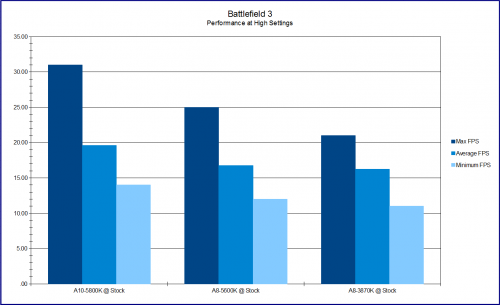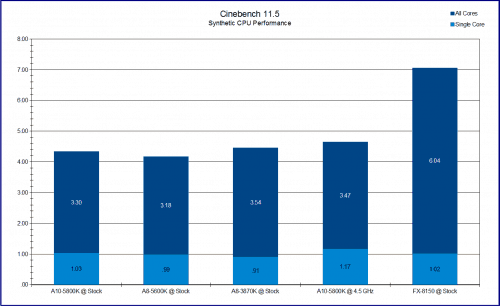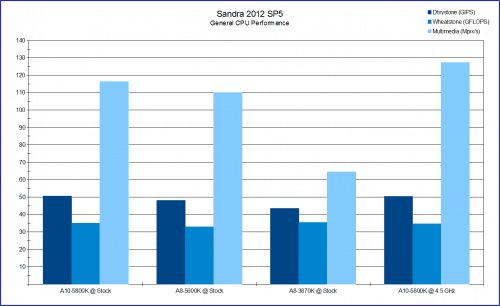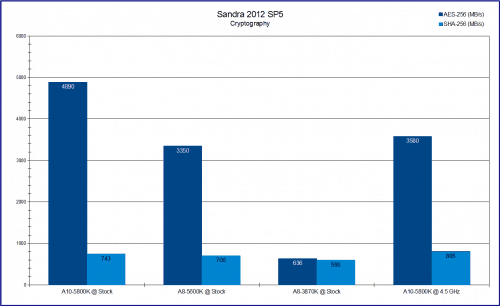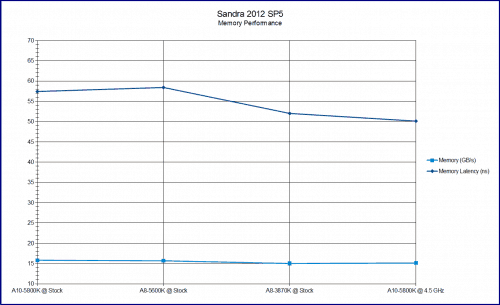Real World Gaming Performance (Battlefield 3)
We found out that the Llano APUs could easy run older titles at maxed out settings with little trouble. This included great titles such as Portal 2, Trine, and Mass Effect 2. With some tweaking you could also get playable frame rates out of last years AAA titles such as Deus Ex: Revolution and Mass Effect 3. Since I am sure you can get Trinity to do the same, lets push these chips to their limit with Battlefield 3 at 1920 x 1080 on High with no motion blur on the Alborz Mountains map.
As you might expect, there is no playing BF3 on High with only an APU. It is good to see that the Trinity chips both did better than their predecessor. As foreshadowed by previous tests, the A10-5800K maintains a comfortable lead. If you really insist on trying to play this game with just your an A10-5800K, you will need to set the shared memory to 1 GB or better to stop texture pop-in and use 2133 MHz memory if possible to give memory bandwidth a boost.
You’ll also need to set custom graphical settings in-game. I eventually got a solid 30 FPS using modified low settings, but I still found the system hindering my gameplay. This is a place where we’d strongly recommend a discrete graphics solutions. But if you are a fairly casual gamer, then you’ll still find many great titles to play at very reasonable quality and frame rates.
Now let’s move on to how the new Trinity APU works as a CPU alone.
General CPU Performance (Cinebench 11.5)
Now that we are clear the on-die 7660D and 7560D are solid performers, lets zoom in on the CPU side of Trinity. Using Cinebench 11.5, we will assess any improvement since Bulldozer. I will be including test results from the FX-8150 in these graphs for comparison.
The new Piledriver architecture does manage to pull ahead of the arguably higher end Bulldozer chip. Even when compared to the A8-5600K in single CPU test, the FX-8150 falls behind despite having a high maximum speed of 4.2 GHz. When the higher clocked A10-5800K (3.8 GHz default/4.2 GHz Max Turbo) is put to the test it comes in even faster. While still well behind Intel’s latest and greatest, it is good to see improvement here.
Sandra 2012 SP5 (Arithmetic CPU Performance)
Now that we have an idea how how the CPU battles should go, lets do some specific testing to see how it performs in various tasks. We’ll be assessing general CPU performance using the Dhrystone and Whetstone arithmetic tests. We’l also be adding in the Multimedia test as well.
In the arithmetic tests, the new instruction sets make no difference. Here the numbers stay very close with the A10-5800K maintaining that lead. The A8-3870K does manage to take the victory by a small amount in the Whetstone performance. Multimedia testing (how many megapixels the CPU can render in 1 second) is no comparison at all with performance nearly doubled over the A8-3870K with the new Trinity.
Sandra 2012 SP5 (Cryptography Performance)
Next up is cryptography in which the Trinity chips get a huge advantage in AES-256 test thanks to the AES instruction set support. This means we mainly want to see how the SHA-256 test results come out since the FX-8150 had trouble with this before. We will see how updates to the software may have changed this.
These results came out exactly as expected with the AES-256 testing being completely unfair. In the SHA-256 results we’re happy to see a strong performance from both of the new Trinity chips, but there is a strange drop in performance when overclocked. Overall a good sign for these kinds of tasks and for the upcoming Vishera FX chips which will boast an additional 4 cores for a total of 8 physical cores.
Sandra 2012 SP5 (Memory Performance)
Finally, we have memory performance to look at. Please note, we were unable to run memory at 2133 MHz RAM with the FX-8150 or A8-3870K without system stability issues. The new A10-5800K and A8-5600K can both run with memory at this speed with no issues. Our memory is designed to run at 2133 MHz 9-11-10-28 @ 1.65V by default, but we only used this speed during overclocking tests.
There is a very minor improvement in memory performance at the same speed. I initially wanted to dismiss this as a fluke, but repeat testing yields the same result. This is secondary to stable performance at higher memory clocks.
Let’s push some slightly more real world tests at these APUs/CPUs and see how they do.

